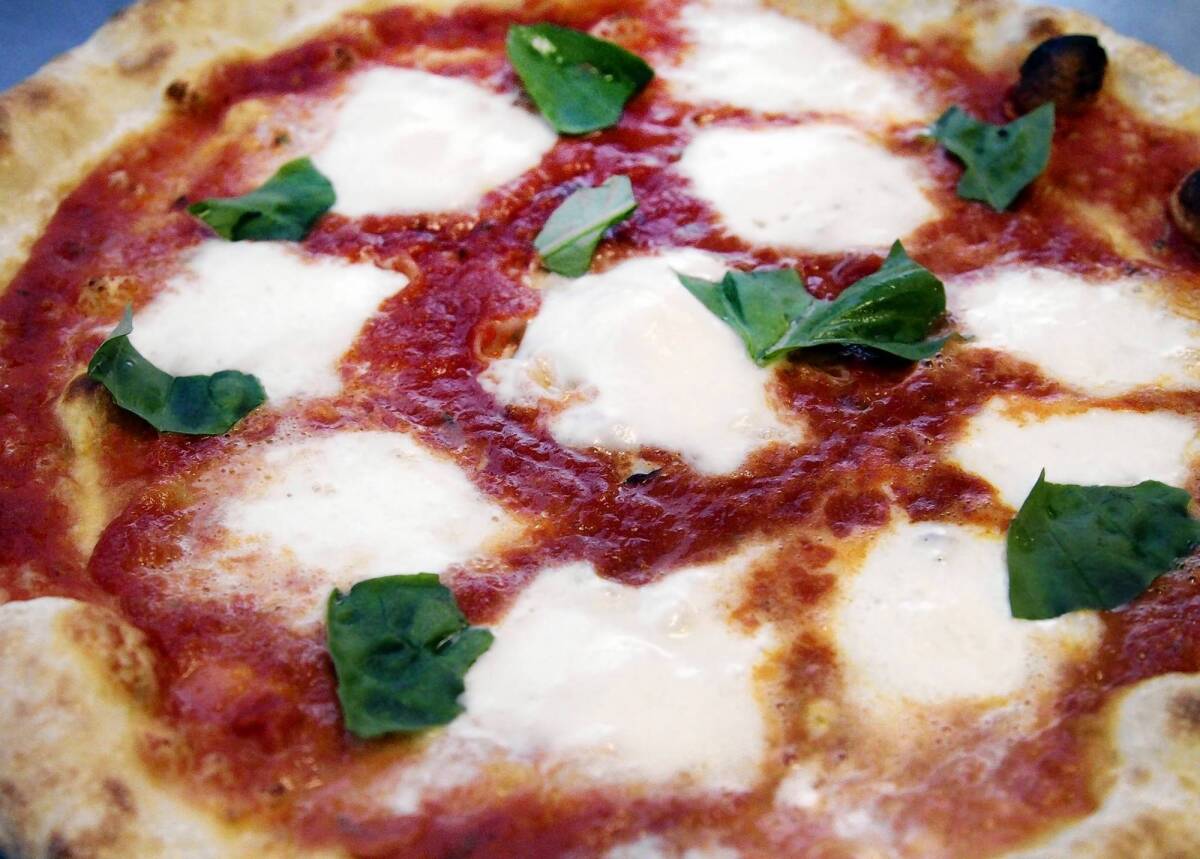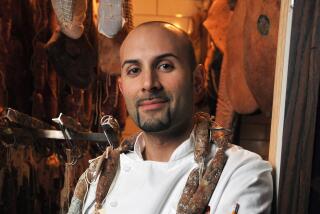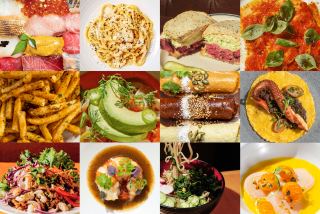Counter Intelligence: Jonathan Gold reviews Terroni downtown

New restaurants have been opening downtown in impressive numbers this year, important places, many of them, carved out of the grand Beaux-Arts spaces some of us forgot even existed in Los Angeles, fitted with elegant cocktail menus, equipped with culinary pedigrees. People have stopped complaining that all the good new restaurants are on the Westside and started complaining that all the good new restaurants are downtown — and a decade ago not even the most ardent advocate of Historic Core redevelopment could have predicted $150 omakase sushi on Main Street, or refined tasting-menu restaurants, or Italian kitchens finicky about the provenance of their buffalo mozzarella. Even with setbacks like the recent closing of the gastropub Parish, it is clear that valet parking is winning out over the SROs.
The latest reclamation project to hit the Historic Core district is Terroni, a vast new restaurant from the owners of the splendid, relatively modest pizzeria of the same name near the Farmers Market, occupying a lavish bank building built in 1924. Where the Beverly Boulevard place is low-key enough to include a foosball table as part of the décor, the downtown restaurant has soaring gilt ceilings and a glassed-in wine room. Where Italians sometimes outnumber Angelenos in the midtown Terroni, downtown is pretty monolingual.
In Toronto, where the small chain is based, Terroni is famous for its idiosyncrasies, for its small insistence on maintaining its Southern Italian identity. In L.A., where some diners have nightmares about displeasing their sushi chefs, it’s just another restaurant.
Still, the new Terroni appears almost as if the owners were checking the conventions of a postmodern Italian restaurant off a standard list. A movie screen that day in, day out shows nothing but Fellini’s “La Dolce Vita”? Check. Taped Italian-language lessons in the bathrooms? Check. Tables numbered in Italian, a wall of hanging meats, and a chandelier that looks as if it were purchased at the estate sale of a Tuscan castle? It goes without saying.
The urban infatuation with Italian food has been going on for a long time in North America, the tropes are well-established, and the job of a smart designer is to position the clichés in a way that lets us know that he or she knows that we’re in on the joke too. It’s a delicate line between inlaying recipes on a dining room wall as kitsch and inlaying recipes as forward design — and the difference, I think, may be as small as the elegance of the font.
But nobody has ever questioned the solid virtues of the cooking at Terroni: the plates pairing sliced San Daniele prosciutto or cured duck with vegetables and creamy burrata cheese; the pleasant fried zucchini flowers stuffed with herbed ricotta or the stolid deep-fried rice cones called arancini; the pungent bresaola or the correct beef carpaccio plate. Some Italian restaurants may be curing more of their own meats by now, and others may have larger cheese selections, but the point is made.
The pastas are all made in house, and cooked a few seconds short of al dente, but you are generally better off sticking with Southern Italian classics like cavatelli alla Norma with fried eggplant, or spaghetti ca’ muddica, like a pasta puttanesca enriched with breadcrumbs, than you are with Northern Italian-leaning pastas like tagliatelle in a dullish Bolognese ragù or bucatini in a wildly unbalanced Amatriciana sauce. (I really like the maccheroncini Geppetto with sausage and sharply bitter dandelion greens, and the vibrant spaghetti al limone with spinach and capers.)
Terroni was really early on the “no substitutions, no modifications” thing — I’m pretty sure staff at the Beverly Boulevard restaurant used to wear T-shirts with that legend printed on the front. In practice it didn’t end up amounting to that much, although you were generally denied grated cheese if your waiter suspected you were about to put it on seafood pasta, and salads are served with good, spicy olive oil but no vinegar, which you are told is inappropriate.
But you are probably here for the pizza — crisp, hand-stretched, and relatively thin; big enough to serve as a main course for two or three; served as a standard Margherita with tomato, mozzarella and basil or topped with relatively imaginative combinations like the white mangiabbun with rapini and sausage; the Italia-Germana with mushrooms and ham; or the Santo Spirito with fresh marbles of mozzarella, cherry tomatoes and Sicilian anchovies. I like the unpronounceable c’t mang, a white pizza with ripe, sliced pear, a bit of gorgonzola melted into the mozzarella, and transparent, honey-brushed slices of the smoky Italian ham called speck, like a cheese plate in the form of a pizza.
As at all proper Southern Italian pizzerias, the pies are delivered to the table intact, unbesmirched by the touch of a pizza wheel. Pre-cutting slices makes the crust cold or soggy, you are informed. And as fervently as you may complain about this in person or on Yelp, the kitchen is unlikely to change its mind.
Solid Southern Italian cooking in a grand downtown space. But the restaurant still won’t slice your pizza.
LOCATION
802 S. Spring St., Los Angeles, (213) 954-0300.
PRICES
Appetizers $6-$20; salads $7-$15; pastas $15-$20; pizzas $13-$19; desserts $7-$9.
DETAILS
Open 11 a.m. to 11 p.m. Monday-Thursday; 11 a.m. to midnight Friday; 10 a.m. to midnight Saturday; 10 a.m. to 11 p.m. Sunday. Credit cards accepted. Full bar. Valet parking. Takeout.
RECOMMENDED DISHES
Spaghetti ca’ muddica; maccheroncini Geppetto; pizza c’t mang; bombolone alla crema.
More to Read
Eat your way across L.A.
Get our weekly Tasting Notes newsletter for reviews, news and more.
You may occasionally receive promotional content from the Los Angeles Times.






